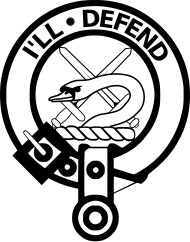Clan Lennox
| Clan Lennox | |||
|---|---|---|---|

Crest: Two broadswords in saltire behind a swan's head and neck all Proper.
|
|||
| Motto | I'll defend | ||
| Profile | |||
| Plant badge | A rose slipped Gules | ||
| Chief | |||
 |
|||
| Edward Lennox of that Ilk and Woodhead, | |||
| Chief of the Name and Arms of Lennox. | |||
| Seat | Downton Castle | ||
| Historic seat | Lennox Castle | ||
|
|||
|
|||
Clan Lennox is a Lowland Scottish clan. The clan chiefs were the original Earls of Lennox, although this title went via an heiress to other noble families in the fifteenth and sixteenth centuries. The chiefship of the clan then went to the Lennox of Woodehead branch.
The ancient earldom of Lennox once covered the whole of Dumbartonshire, as well large parts of Perthshire, Renfrewshire and Stirlingshire. In Scottish Gaelic, Leven-ach means a smooth stream. The ancient Celtic Mormaers of Levenax became the Earls of Lennox. The origins of the earldom, that had been established by the twelfth century, are disputed. One theory is that a Saxon baron named Arkyll received from Malcolm III of Scotland lands in Dumbartonshire and Stirlingshire. Also that Arkyll married a Scottish heiress and had a son who was Ailín I, Earl of Lennox. Other historians have said that the earldom of Lennox was conferred to David, Earl of Huntington from his older brother, William the Lion and that the Lennox family was not established until after the reign of William.
By the end of the thirteenth century, the Earls of Lennox were amongst the most powerful nobles in Scotland.Malcolm, 5th Earl of Lennox supported Robert the Bruce's claim to the Scottish Crown. Malcolm led his Lennox men into England and besieged Carlisle in 1296. Malcolm also swore fealty to Edward I of England, appearing on the Ragman Rolls, but he was later one of the mainstays of Robert the Bruce in the struggle for Scottish independence.
...
Wikipedia
